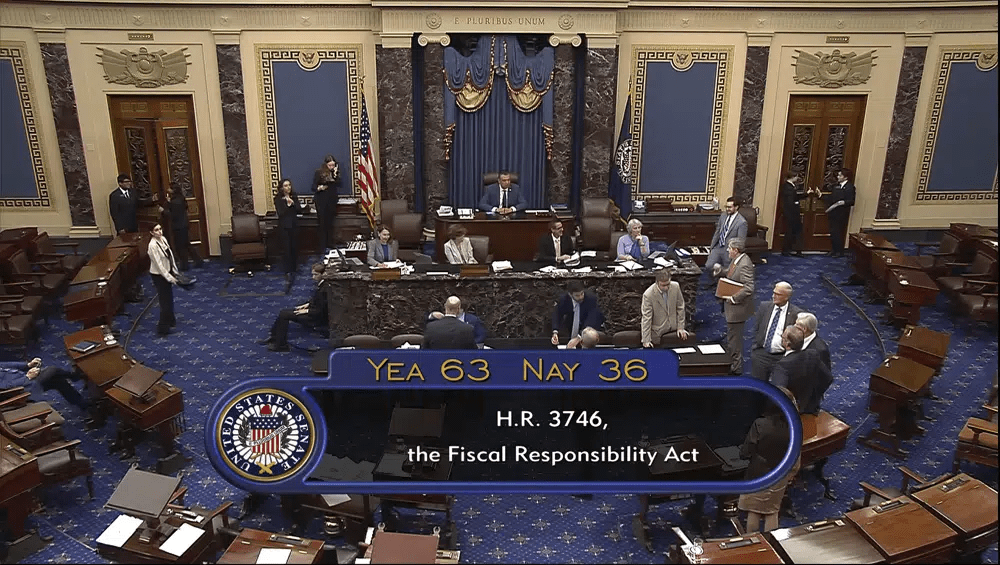The debt ceiling and budget cutbacks plan has received the final approval of the U.S Senate. Kevin McCarthy, the speaker of the House, and Joe Biden reached a compromise plan that neither Republicans nor Democrats are quite satisfied with.
However, the decision, reached after weeks of difficult budget discussions, puts off the contentious debt ceiling debate that threatened to destabilize the American and global economies until 2025, following the next presidential election.
A day after passing the U.S House of Representatives by a vote of 314-117, the bipartisan proposal breezed past the Senate by a vote of 63-36.

Senate Majority Leader, Chuck Schumer said ahead of voting that the bill’s passage means “America can breathe a sigh of relief.” Afterward he said, “We’ve saved the country from the scourge of default.”

Washington needed to move quickly if it wanted to make the June 5 deadline, when Treasury has warned that the U.S. will start running out of money to pay its debts and run the risk of a catastrophic default. Raising the country’s current $31.4 trillion debt ceiling would allow Treasury to borrow money to pay down existing U.S. debts.
In the event of a default, the government wouldn’t be able to borrow more money or cover all of its obligations. Additionally, it might perhaps cause turmoil abroad by impacting pricing and mortgage rates in other nations.
The bill passed in the Senate with support from 44 Democrats and 17 Republicans, plus two independents.
Sixty votes were required to approve the measure in a 100-seat chamber that Democrats only narrowly control.
Thirty-one Republicans were opposed, including a member of the party’s leadership in the chamber, John Barrasso.
Among the four Democrats who voted against were left-wing senators Bernie Sanders, John Fetterman and Elizabeth Warren.
Biden To Sign The Bill Into Law As Soon As Possible

U.S President Joe Biden noted in a statement following the passage that senators from both parties “demonstrated once more that America is a nation that pays its bills and meets its obligations — and always will be.”
Biden stated that he would sign the bill into law as soon as possible. “No one gets everything they want in a negotiation, but make no mistake: this bipartisan agreement is a big win for our economy and the American people,” the U.S President said.
The White House disclosed that Biden would address the nation about the matter at 7 p.m. EDT on Friday, June 2, 2023.
His signature on the bill will spare the U.S from a catastrophic default on its $31.4tn (£25tn) debt.
Overall, the 99-page plan limits spending for the next two years, suspends the debt ceiling; the spending limit set by Congress that determines how much money the government can borrow, until January 2025, and makes certain policy changes, such as adding new job requirements for senior citizens getting food assistance and approving a natural gas pipeline across the Appalachian Mountains, which is opposed by many Democrats.
It increases funding for the military and veterans, reduces new funding for IRS officers, and rejects Biden’s proposal to roll back tax incentives for corporations and the rich from the Trump administration in order to reduce the deficits in the country. If Congress fails to adopt its yearly budget bills, it imposes automatic 1% cuts.
According to the independent Congressional Budget Office, the legislation will result in $1.5tn in savings over a decade.
The last time the U.S came this close to exceeding its debt ceiling, in 2011, the rating of the nation was lowered by the credit rating agency Standard & Poor’s, a decision that has yet to be overturned.



















